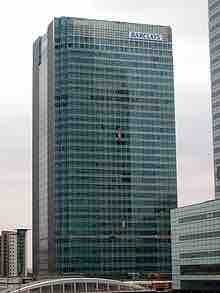Capital structure is the way a corporation finances its assets, through a combination of debt, equity, and hybrid securities. In short, capital structure can be termed a summary of a firm's liabilities by categorization of asset sources. In a simple example, if a company's assets come from a $20 million equity issuance and lending that amounts to $80 million, the capital structure can be said to be 20% equity and 80% debt. While equity results from the selling of ownership shares, debt is termed "leverage. " Therefore, a term that has issued no debt or bonds is said to not be leveraged. This is a simplistic view, because in reality a firm's capital structure can be highly complex and include many different sources.

Capital Structure
Captial structure is the assignment of the sources of company assets into equity or debt securities.
The Modigliani-Miller theorem, proposed by Franco Modigliani and Merton Miller, forms the basis for modern thinking on capital structure (though it is generally viewed as a purely theoretical result, since it disregards many important factors in the capital structure decision). The theorem states that in a perfect market, how a firm is financed is irrelevant to its value. However, as with many theories, it is difficult to use this abstract theory as a basis to evaluate conditions in the real world, where markets are imperfect and capital structure will indeed affect the value of the firm. Actual market considerations when dealing with capital structure include bankruptcy costs, agency costs, taxes, and information asymmetry.
Cost of Capital Considerations
One of the major considerations that overseers of firms must take into account when planning out capital structure is the cost of capital. For an investment to be worthwhile, the expected return on capital must be greater than the cost of capital. A company's securities typically include both debt and equity; therefore, one must calculate both the cost of debt and the cost of equity to determine a company's cost of capital. The weighted average cost of capital multiplies the cost of each security by the percentage of total capital taken up by the particular security, and then adds up the results from each security involved in the total capital of the company.
Because of tax advantages on debt issuance, such as the ability to deduct interest payments from taxable income, issuing debt will typically be cheaper than issuing new equity. At some point, however, the cost of issuing new debt will be greater than the cost of issuing new equity. This is due to the fact that adding debt increases the default risk and, thus, the interest rate that the company must pay in order to borrow money. This increased default risk can also drive up the costs for other sources (such as retained earnings and preferred stock). Management must identify the "optimal mix" of financing, which is the capital structure where the cost of capital is minimized so that the firm's value can be maximized.